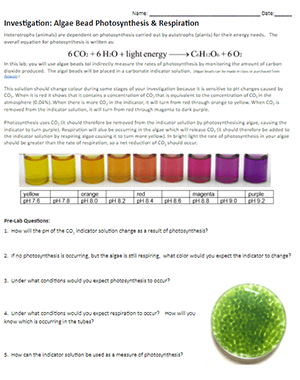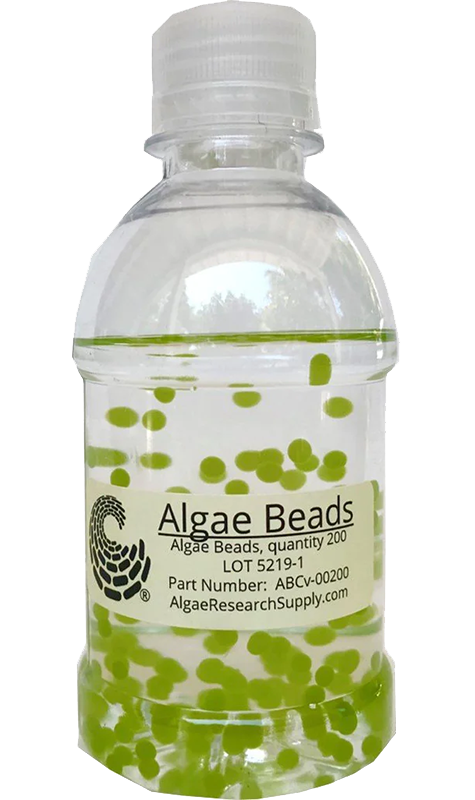
In this lab, students observe photosynthesis through changes in the color of an indicator solution. When algae consume carbon dioxide during photosynthesis, the pH of the solution increases. The indicator solution changes from a red color to purple.
If students place the algae beads in the dark using aluminum foil, the indicator solution changes from red to yellow. The solution becomes more acidic as carbon dioxide is released as a result of cellular respiration.
Students compare the color change of algae exposed to light to those placed in the dark. The universal indicator will have a color chart with it that shows the colors and pH levels.
Ideally, students will already have a basic understanding of photosynthesis and respiration. You could even convert this into an inquiry lesson at the beginning of the unit by asking students to simply observe the results and then construct an explanation.

Algae beads are made from materials ordered from biology supply companies. Though I’ve found this process to be time consuming, and it may be easier to just order the beads premade. The only equipment you would need is the lights and aluminum foil to compare light versus dark. The Algae Research and Supply company has all the things you would need to either make the beads and solutions or order them premade.
Students complete the worksheet by making predictions about what they think will happen. After making observations, they complete the CER section of the handout. Here, they make a claim about how light intensity affects photosynthesis. Students provide evidence from their observations. Finally, they explain their results (reasoning) and how it relates to photosynthesis and respiration.

